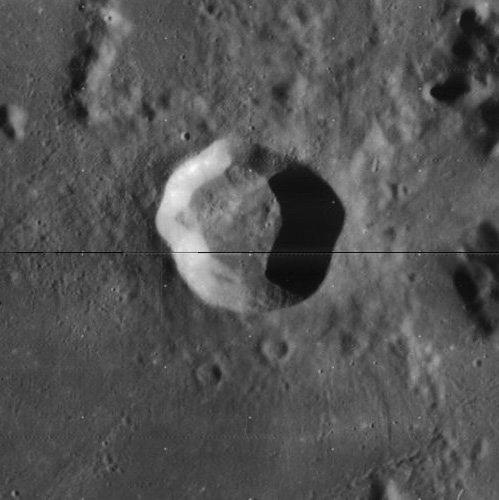 |
| Lyra, small triangle Cropped from "Lyra constellation detail long exposure" by Scott Roy Atwood - Own work. Licensed under CC BY-SA 3.0 via Commons |
The brightest star in Lyra, Vega, forms a small triangle with Epsilon and Zeta Lyrae.
Zeta Lyr
This is a wide binary star consisting of an F-type subgiant and an Am star.
F-type subgiants are subgiant (luminosity class IV) stars of spectral type F. (A subgiant is a star that is slightly brighter than a normal main-sequence (dwarf) star of the same spectral class, but not as bright as true giant stars.)
The Am star has an additional close companion, bringing the total number of stars in the system to three.
An Am star or metallic-line star is a type of chemically peculiar star of spectral type A whose spectrum has strong and often variable absorption lines of metals such as zinc, strontium, zirconium, and barium, and deficiencies of others, such as calcium and scandium.
These abnormalities are due to some elements which absorb more light being pushed towards the surface, while others sink under the force of gravity. This effect takes place only if the star has low rotational velocity.
Normally, A-type stars rotate quickly. Most Am stars form part of a binary system in which the rotation of the stars has been slowed by tidal braking. The best-known metallic-line star is Sirius (α Canis Majoris).
Wikipedia
Epsilon Lyr
This "Double Double" is a wide binary. Both components are themselves close binaries which can be seen with telescopes to consist of A- and F-type stars, and a faint star was recently found to orbit component C as well, for a total of five stars.
If components in binary star systems are close enough they can gravitationally distort their mutual outer stellar atmospheres. In some cases, these close binary systems can exchange mass, which may bring their evolution to stages that single stars cannot attain. Examples of binaries are Sirius and Cygnus X-1 (Cygnus X-1 being a well known black hole).
Wikipedia
An A-type main-sequence star (A V) or A dwarf star is a main-sequence, hydrogen-burning star of spectral type A and luminosity class V.
Bright and nearby examples are Altair (A7 V), Sirius A (A1 V), and Vega (A0 V)
- These stars have spectra which are defined by strong hydrogen Balmer absorption lines.
- They have masses from 1.4 to 2.1 times the mass of the Sun and surface temperatures between 7600 and 11 500 K.
Wikipedia
An F-type main-sequence star (F V) is a main-sequence, hydrogen-fusing star of spectral type F and luminosity class V.
Famous examples include Procyon A Canis Minoris and Gamma Virginis A and B.
- These stars have from 1.0 to 1.4 times the mass of the Sun
- and surface temperatures between 6,000 and 7,600 K, This temperature range gives the F-type stars a yellow-white hue.
Wikipedia
By studying the little triangle of Lyra we learn about star classification which is a fundamental branch of Astronomy. In the case of the triangle focus here is on the main-sequence, mass, surface temperature, luminosity, absorption lines, hue of the star and terminology.
Both Zeta and Epsilon Lyrae introduce the important phenomenon of binary stars which have been such a rich source of information about stellar dynamics, physics and other aspects of star life.
___
Wikipedia quotes are here for the reader's convenience. By linking to the articles much more can be learned about the subjects. (Note that I have slightly edited the quotes for the flow of the text being careful not to change the original content in any way.)
































